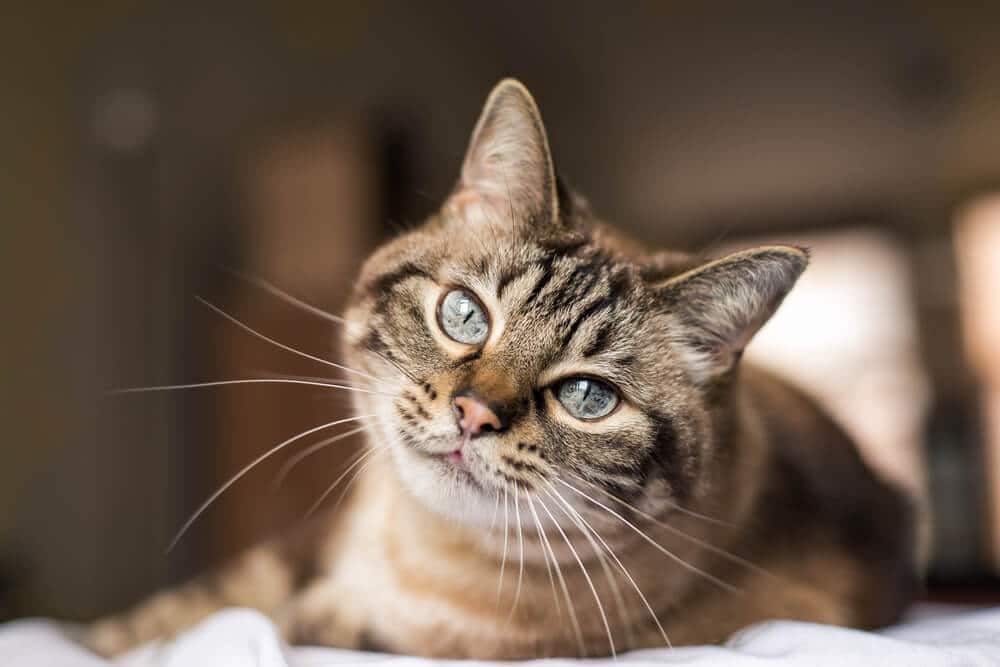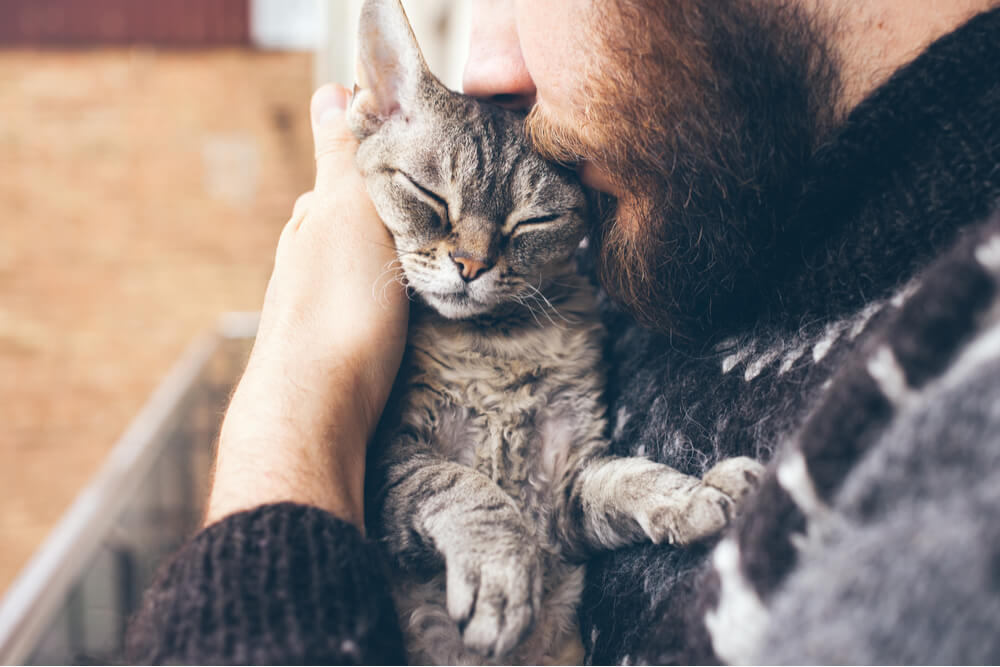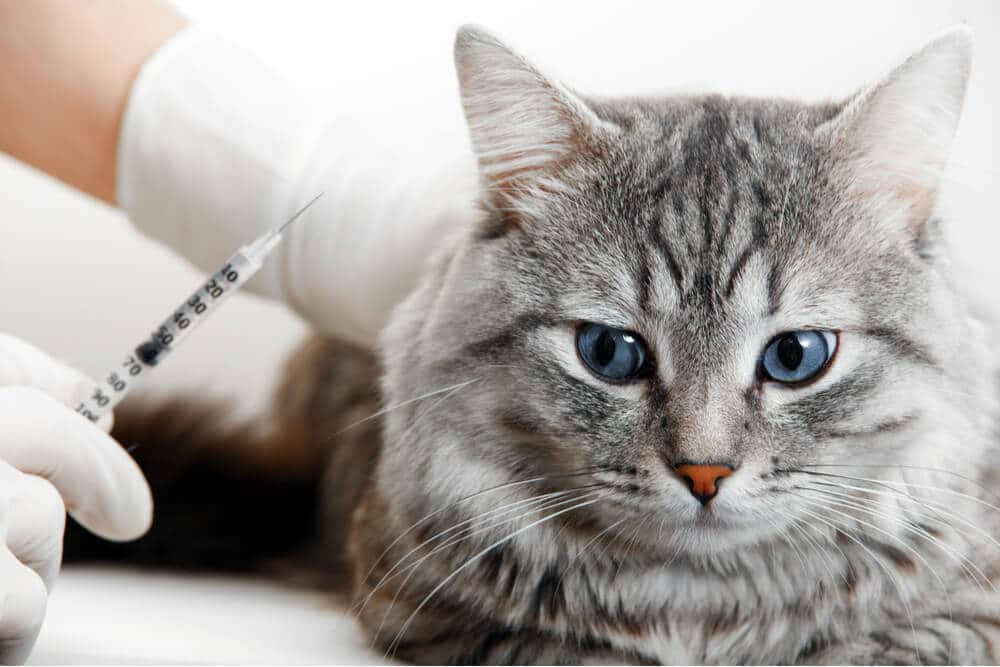
Seizures, also known as fits or convulsions, are caused by excessive electrical activity in the brain. The random firing of nerve impulses leads to loss of normal consciousness with uncontrolled, uncoordinated, repetitive contractions of some or most muscles of the body.
Quick Overview: Cat Seizures
 Urgency: High
Urgency: High
 Requires Vet Visit: Yes
Requires Vet Visit: Yes
 May be Linked to: (Idiopathic) epilepsy, cancerous tumors, infections (viral, bacterial, or parasitic), kidney disease, liver disease, low blood sugar, heat injury, toxins.
May be Linked to: (Idiopathic) epilepsy, cancerous tumors, infections (viral, bacterial, or parasitic), kidney disease, liver disease, low blood sugar, heat injury, toxins.
 Treatment Options: Active seizuring may be ceased with anticonvulsant medication. The underlying cause needs to be determined for best control. Anticonvulsant medication may be continued if epilepsy or another brain lesions is present. Sometimes, steroid medication may be employed.
Treatment Options: Active seizuring may be ceased with anticonvulsant medication. The underlying cause needs to be determined for best control. Anticonvulsant medication may be continued if epilepsy or another brain lesions is present. Sometimes, steroid medication may be employed.
Types of Seizures in Cats
Feline seizures are divided into two types:
- Partial or focal seizures, where just a part of the brain is affected, leading to localized muscle twitching e.g face, eyelids, one limb, etc.
- Generalized seizures (also known as “grand mal” seizures) where the abnormal electrical activity affects most of the brain, causing generalized muscle twitching and contractions that usually symmetrically affect the whole body.
Generalized seizures usually happen as isolated events, but so-called cluster seizures can happen when a series of seizures happen over a few hours or days. Cats usually have seizures at random times of the day, walking around normally beforehand, but some cats seizure while sleeping.
Cat Seizures Explained
Causes of Seizures in Cats
The possible causes of seizures in cats are wide-ranging. They include extracranial (coming from outside of the cranium and brain) causes, such as:
- Heat stroke
- Poisons
- Viruses (such as feline infectious peritonitis)
- Bacteria
- Parasites
- Metabolic diseases (including liver disease and kidney disease)
Other causes stem from the brain, including:
- Congenital abnormalities (such as cerebellar hypoplasia)
- Tumors
- Primary or “idiopathic” (of unknown cause) epilepsy
How Is the Cause of Your Cat’s Seizures Identified?
Sometimes the immediate history of an affected cat will point to the cause (e.g. a cat has had access to a poison), but in most cases, a detailed workup is needed to discover the reason for the seizure.
This may involve blood tests (e.g. to measure blood sugar), urine and cerebrospinal fluid sampling, ultrasound, radiographs (x-rays), and advanced imaging such as computerized tomography (CT) and magnetic resonance imaging (MRI) to check for issues such as brain tumors or signs of head trauma.
In cats with idiopathic epilepsy, no abnormality will be detected in these tests: this is known as a “diagnosis of exclusion” for this reason. An accurate diagnosis of the cause of seizures is essential when deciding on treatment.
Seizure Signs and Symptoms
Most affected cats will show most of these six signs during a seizure.
- Loss of consciousness (seizing cats may appear distressed but they are unconscious so have no awareness of what’s happening).
- Flailing movement of the limbs i.e. extension and flexion, rapid paddling as if trying to run while lying down.
- Urination and defecation.
- Staring, with wide-open eyes and dilated pupils.
- Vocalization, which can sound distressing (even though seizing cats are unconscious so they are not aware that they are vocalizing)
- Autonomic activity i.e. salivation and drooling, rapid heart rate, and panting.
How Do You Know if Your Cat Is Having a Seizure?
If your cat shows any or all of the signs listed above, then they are having a generalized seizure. If they show less severe signs, such as twitching of part of their body (e.g. one side of the face) then they may be having a partial seizure.
What Happens When a Cat Has a Seizure?
A seizure has three stages:
- Prodrome. A cat may show behavioral changes in the seconds, minutes or hours before a seizure. During prodrome, an owner may notice their cat behaving in a way that’s different from normal, such as being more clingy, less playful, or just “different” from normal.
- Ictus. This is the seizure itself. When a cat has a seizure, they collapse, with their limbs flailing and thrashing, showing some or all of the signs listed above. This usually lasts no more than seconds or a few minutes, although rarely it may continue for longer.
- Post-ictal phase. This is the period of altered behavior immediately after a seizure, with disorientation and some confusion, while a cat gradually returns to normal.
How Do Cats Act After a Seizure?
After a seizure, during the post-ictal stage, a cat may seem disoriented, pacing around, vocalizing, perhaps seeming restless or dazed. This can last minutes or hours.
Cat Seizure Treatment

Cats express trust in varied and unique ways, including vocalizations, marking behaviors, and tail position.
Most seizures only last for seconds or a few minutes and no immediate treatment is needed. Rarely, a generalized seizure may continue for more than a few minutes (so-called status epilepticus) and in such cases, the animal should be rushed to the vet for emergency treatment.
Longer-term, the treatment of seizures in cats is linked to the underlying cause of the seizures.
For example, if the seizure is caused by poisoning, prevent access to the poison. If a brain tumor is identified, surgery to remove the tumor may be suggested. This is why accurate diagnosis of the cause is so important.
If no specific cause is identified, and the cat is therefore diagnosed with “idiopathic epilepsy”, anti-seizure medication may be needed. This is not always given immediately after a single seizure, but only if a cat has seizures frequently (e.g. more often than once every six weeks) or in clusters (e.g. four seizures over a few days).
What To Do if Your Cat Has a Seizure
If a cat has a seizure or twitches uncontrollably, this is an emergency.
Clear a space around the cat so that they cannot hurt themselves by bumping into objects or falling from a height (e.g. down a staircase). Do not touch your seizing cat’s mouth. They will not swallow their tongue.
Wait for the seizure to finish. You should time how long the seizure lasts. If it goes on for more than a few minutes, you need to rush your seizing cat to the vet at once.
It’s helpful to take a video of the seizure happening: this may help your veterinarian to make a diagnosis of the cause of the seizure. It can be frightening when a cat has a seizure for the first time.
Home Remedies for Cat Seizures
There are no home remedies: if a cat is suffering from regular seizures, you need to work with your veterinarian to give them appropriate treatment. The best that you can do is to keep a seizure diary, writing down the details of your cat’s seizure whenever they happen, so that you can fully inform your vet about what has been happening.
Cat Seizure Medication

While most seizures are brief and don’t require immediate treatment, a long-lasting seizure demands a trip to the vet. If you bring your cat to a veterinarian while they’re seizing, the vet will administer medications to stop the seizure.
If a cat is taken to the vet while still seizing (status epilepticus), medication such as intravenous anesthetics or diazepam will be given to stop the immediate seizure.
Further medication may be given as needed. It is critically important to stop seizures that have not halted spontaneously: if this is not done, brain damage can result.
Anticonvulsant therapy is usually recommended after the second or third seizure, after a cluster of severe seizures over a short space of time (e.g. days), or if a cat has status epilepticus. Your DVM will help you assess the severity of the seizures and the need for medication.
Anticonvulsants may not be needed if seizures are mild, short in duration, and happen less often than every 2 – 3 months.
A number of different anticonvulsant medications are available (e.g. phenobarbital). You will be guided to the most appropriate choice by your vet. Regular checkups are important, as seizure activity needs to be monitored.
Furthermore, your cat’s medication may need to be tweaked if any side effects develop.
Can Cat Seizures Be Cured?
If the primary cause of the seizures can be removed (e.g. poison or brain tumor) then the seizures may be permanently cured. If a cat suffers from idiopathic epilepsy, then the seizures can usually be controlled by lifelong anticonvulsant therapy.
Final Thoughts
Seizures are rare in cats, affecting around one in fifty cats. In two-thirds of cases, a definite cause can be identified, while in a third of cases, no cause can be found, so they are classified as idiopathic epilepsy. Veterinary care is essential for effective treatment.








My cat had her first fit in 20 years. It was very scary.
After reading this I am definitely more informed and will not find it so scary next time.
Thank you
Glad the article provided some knowledge and comfort.
Thank you that was very informative
Hi my cat was having 3 fits a day sometimes didn’t want her on drugs then she had cystitis , along with the meds from the vet I gave her cystease from felaway her cystitis went and so did the fits , she has only had 1 small fit in 7 weeks and that was when she fell of a chair , I give her 1 tablet every 2 days they are cheap off the internet and worth a try as I know how distressing fits can be for cats and owners
What a fantastic, informative website! Thank you Pete for the video and article.
I really appreciate this article and video, as it confirms what I had researched a year ago when my newly adopted cat had 2 in 2 days. This time he had 2 six hours apart last night and 2 shorter ones this afternoon and evening. Unfortunately, this all began on Friday night and tomorrow is Sunday, so I won’t be able to call the vet until Monday. Blood work was done last year and nothing was revealed as to the cause.
My cat started having seizures when she was 3 years old just out of the blue. They were far apart and then got closer and closer together. She was put on a seizure med and does much better now, only having an occasional episode every few months. She also has bad vision which our vet says could be related. We manage with the medication and she seems happy!
This is exactly the same situation as my cat although he’s 4, not 3. It happened once out of the blue and now he’s on phenobarbital every 12 hours. Our whole life has changed because of this and he’s not himself almost a month into the medication. I’m curious, did your vet prescribe something immediately? And did you do any MRI/neurological work to pinpoint why? We’re struggling to figure out the next steps.